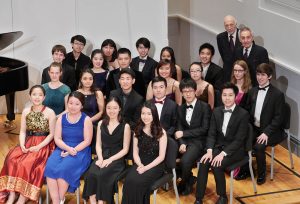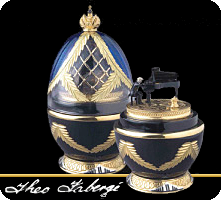![]()
by Michael Miller, November 1, 2016
Almost any seasoned music lover will at some time complain about the globally-renowned musicians who play at Carnegie Hall, Symphony Hall, or Tanglewood. You’ll hear that the players in this orchestra or that are cynical and bored, that a particular violinist over the years has developed into a parody of herself, or that a certain pianist is going through a dry period and that the life has gone out of his playing. The most efficacious antidote for that malaise is to seek out young musicians who are still enthusiastic and still believe that they have to do their best all the time.
We are all thrilled by the brilliant young musicians of the Tanglewood Music Center. It is even fashionable to disparage the playing of the venerable Boston Symphony Orchestra in comparison with the TMC Orchestra. The heady atmosphere of Marlboro has fomented a creative equilibrium of youth and age since 1951. I’ve never been disappointed by the instrumentalists and singers that Young Concert Artists place at the Tannery Pond Concerts and other venues. There is no dearth of outstanding youth orchestras. The Carnegie Hall concerts of the National Youth Orchestra have been joyously received. One can attend concerts at music school like Juilliard, the New England Conservatory, Mannes, the Manhattan School, or Curtis and hear young artists at a variety of stages of development—all interesting, if occasionally inchoate, from master classes to the concerts teachers organize for their students. Today, musical understanding, not just technique, emerges at uncannily young ages. The numerous American offshoots of El Sistema provide further opportunities for young people to play and for audiences to listen to them. I for one was throughly delighted by a graduation concert by the orchestra and chorus of the Fiorello H. Laguardia High School this past summer. The program included Mahler’s First Symphony and the Duruflé Requiem, and the students were fully up to the mark.
I haven’t yet mentioned music competitions, an institution which by contrast is both loved and hated by players and audiences alike. It is virtually the only situation in which a wrong note can ruin an entire performance. Perhaps I exaggerate, but the hours of technically perfect, but immature and soulless performances of the most virtuosic display works of Liszt, Chopin, and others can be demoralizing. When I first attended a competition concert, which I actually enjoyed, I was surprised that anyone still played this repertoire…after being introduced to “good” Liszt by Alfred Brendel and placing his repertoire at the center of my pianistic universe. The pressure of the competition environment, the importance of technique, and the focus on avoiding errors encourages—rather requires—a particular kind of playing, which is not entirely conducive to filling a hall and the hearts of the audience with the soul of Beethoven, Schubert, or the “good” Liszt.
On online discussion around a caustic and very amusing blog post by the brilliant young pianist Pavel Kolesnikov points to other weak points. One feels that the counter-argument expressed by Peter Donohoe, a highly-respected pianist and experienced juror at competitions persuasively indicates that Kolesnikov went too far in his vituperation of corrupt jurors who vote for their own pupils. And there were some sour notes about the Leeds International Piano Competition, just where one would expect to find it, on Norman Lebrecht’s blog, Slipped Disc. Is this ungracious carping or a constructive critique, necessary to maintaining the standards of a renowned institution? It is hard to deny the astringent, but necessary benefit of criticism, as long as the writer can combine a rigorous allegiance to standards with civilized indulgence…above all, as long as the critic has been listening!

Melvin Stecher and Norman Horowitz with the 2016 finalists of the New York International Piano Competition
Now a few days after that marvelous concert at Laguardia High School, I attended an awards ceremony at the Manhattan School of Music for piano competition which seems to avoid the pitfalls I have just discussed. The New York International Piano Competition is the primary activity of the Stecher and Horowitz Foundation, an outgrowth of The Stecher and Horowitz School of the Arts. Founded in 1960, in Cedarhurst, New York, it moved to New York City in 1999. The duo-pianists, Melvin Stecher and Norman Horowitz, Executive Directors of the Foundation and Founders of the original school, continue to preside over it. The principal goal of the Foundation is described as mentoring, and this conception manifests itself in a rich variety of services before, during, and above all after the competition. The Foundation website describes it in this way:
“Each young artist will compete for cash prizes and concert appearances. There is no elimination of participants during the competition’s four rounds. Each contestant will be judged by a jury of the most distinguished members of the international music community. In addition to the prizes awarded to the winners, the Foundation presents a cash award to each of the remaining contestants. Rather than the traditional competition model where the focus is on winning, The New York International Piano Competition provides an opportunity for contestants to perform, network, exchange information and cultivate a support system that will carry them through their pre-professional years.”
During the ceremony Messrs. Stecher and Horowitz constantly emphasized that there were no losers in the competition. Each of the finalists receives a cash award, and from fourth to first place this increases up to $10,000. Since Stecher and Horowitz are duo pianists, there is special recognition for piano four hands in two substantial prizes, as well as a special prize for a performance of the new work the Foundation commissions each year from a distinguished composer, in 2016, Lowell Lieberman. This policy of an annual commission is one more commendable feature of this competition. All prize-winners and finalists are given places on the roster of Young Concert Artists. I know nothing of the inner workings of the jury and the rest of the operation, but the selection of jurors and the broad reach of their nationalities, suggests that all is in perfect order.
The three top prize-winners played pieces they had prepared for the competition. Given a choice between Beethoven or Scriabin, First Prize winner, Aristo Sham, born in Hong Kong, a student at Harvard, chose Scriabin, and he played splendidly, with impressive technique and varied color, but above all with musicality and expression. That is what the New York International Piano Competition is looking for: piano music as art and human expression, not a form of athletics or drill. Second prize-winner Angie Zhang, born in China, now a resident of Princeton and a student at Juilliard, and Jiacheng Xiong, also born in China, and now a student at Curtis, both gave performances informed by the same musical values—which are what we should all want in music. Bravo to the young musicians and bravo to Mr. Stecher and Mr. Horowitz for supporting the highest values in musical performance.
The performance of Brahms’ Haydn Variations (not all of them) by these admirable gentlemen will illustrate these values to perfection:
Now isn’t that just as good as it gets!
 About Michael Miller: Michael Miller, Editor and Publisher of New York Arts and The Berkshire Review, an International Journal for the Arts, was trained as a classicist and art historian at Harvard and Oxford, worked in the art world for many years as a curator and dealer, and contributed reviews and articles to Bostonia, Master Drawings, Drawing, Threshold, and North American Opera Journal, as well as numerous articles for scholarly and popular periodicals. He has taught courses in classics, the English language, and art history at Oberlin, Rutgers, New York University, the New School, and Williams. Currently, when he is not at work on The Berkshire Review and New York Arts, he writes fiction, pursues photography, and publishes scholarly work. In 2011 he contributed an introductory essay to Leonard Freed: The Italians / exh. cat. Io Amo L’Italia, exhibition at Le Stelline, Milan, and wrote the revised the section on American opera houses in The Grove Dictionary of American Music. He is currently at work on a libretto for a new opera by Lewis Spratlan, Midi, an adaptation of Euripides’ Medea set in the French West Indies, ca. 1930.
About Michael Miller: Michael Miller, Editor and Publisher of New York Arts and The Berkshire Review, an International Journal for the Arts, was trained as a classicist and art historian at Harvard and Oxford, worked in the art world for many years as a curator and dealer, and contributed reviews and articles to Bostonia, Master Drawings, Drawing, Threshold, and North American Opera Journal, as well as numerous articles for scholarly and popular periodicals. He has taught courses in classics, the English language, and art history at Oberlin, Rutgers, New York University, the New School, and Williams. Currently, when he is not at work on The Berkshire Review and New York Arts, he writes fiction, pursues photography, and publishes scholarly work. In 2011 he contributed an introductory essay to Leonard Freed: The Italians / exh. cat. Io Amo L’Italia, exhibition at Le Stelline, Milan, and wrote the revised the section on American opera houses in The Grove Dictionary of American Music. He is currently at work on a libretto for a new opera by Lewis Spratlan, Midi, an adaptation of Euripides’ Medea set in the French West Indies, ca. 1930.


